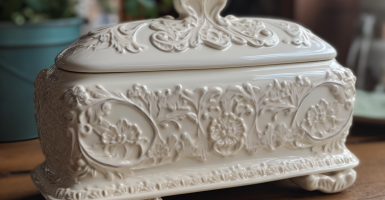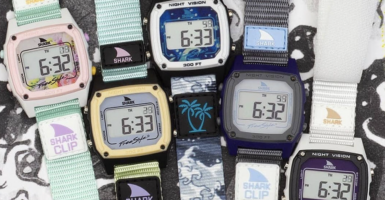Moving Vintage Photos That Capture The Final Days Of World War II
Following years of escalating tensions, World War II officially broke out in 1939. After years of fighting and millions of deaths, by late 1944, the end of the war was finally in sight.
With the tide of war turning in favor of the Allies, Axis forces found themselves on the run in Europe, while Imperial Japan suffered setbacks in the Pacific Theater. Let’s take a look at the state of the world in the final months of World War II.
The Allies took the fight to the continent.
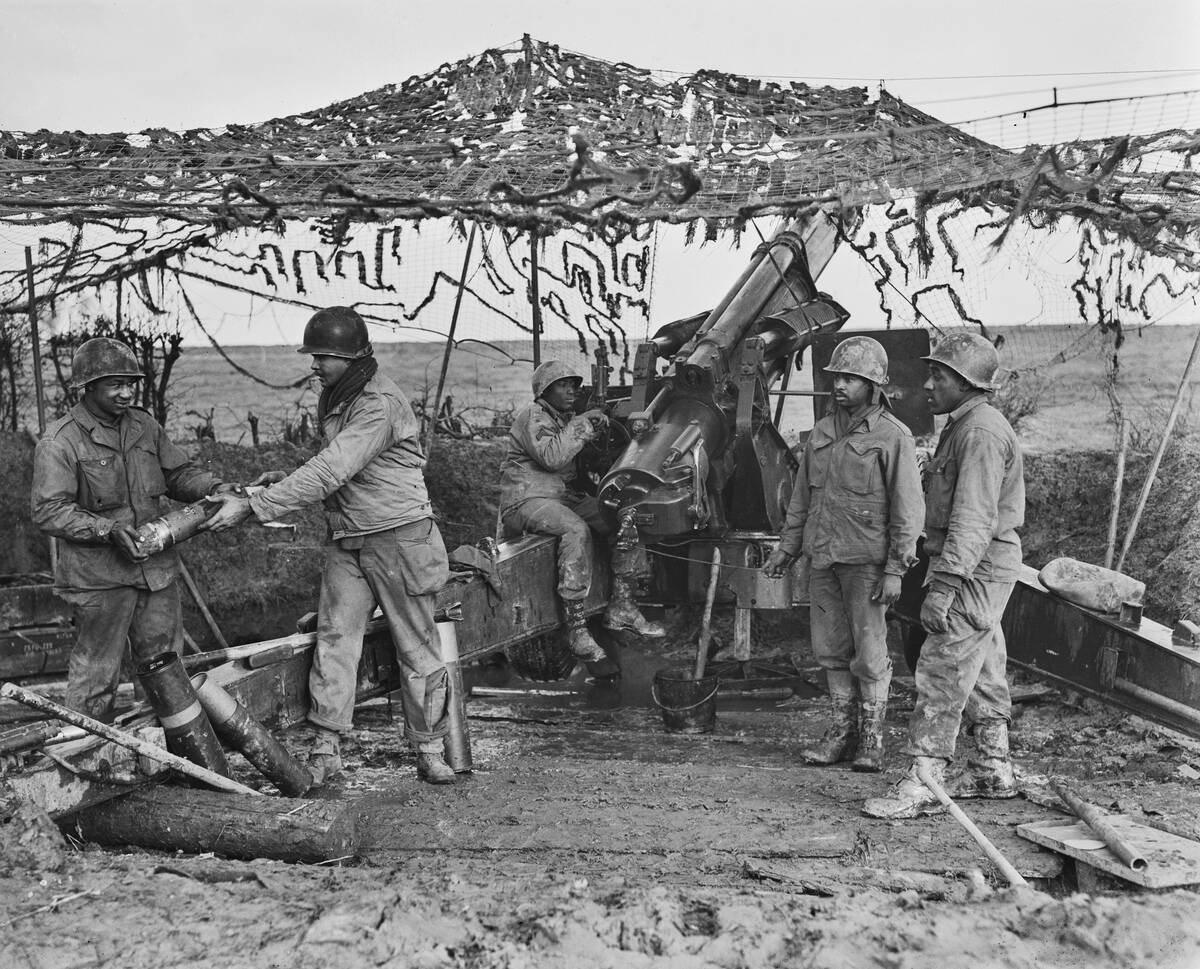
While mainland Europe had once been seen as impregnable, it was said that “Fortress Europe doesn’t have a roof” — and indeed, Allied aerial attacks weakened German positions in Europe.
Following the successful Allied landings in Normandy and the liberation of France, the North Rhine-Westphalia region of Germany became a key battleground.
German soldiers were taken prisoner.

Months later, in the final days and weeks of the war, German prisoners of war were brought to the British Channel islands.
Because the islands had been occupied by Germany during the war, many of these POWs were put to work to help clear the extensive fortifications that had been built.
The Allies advanced through Germany.
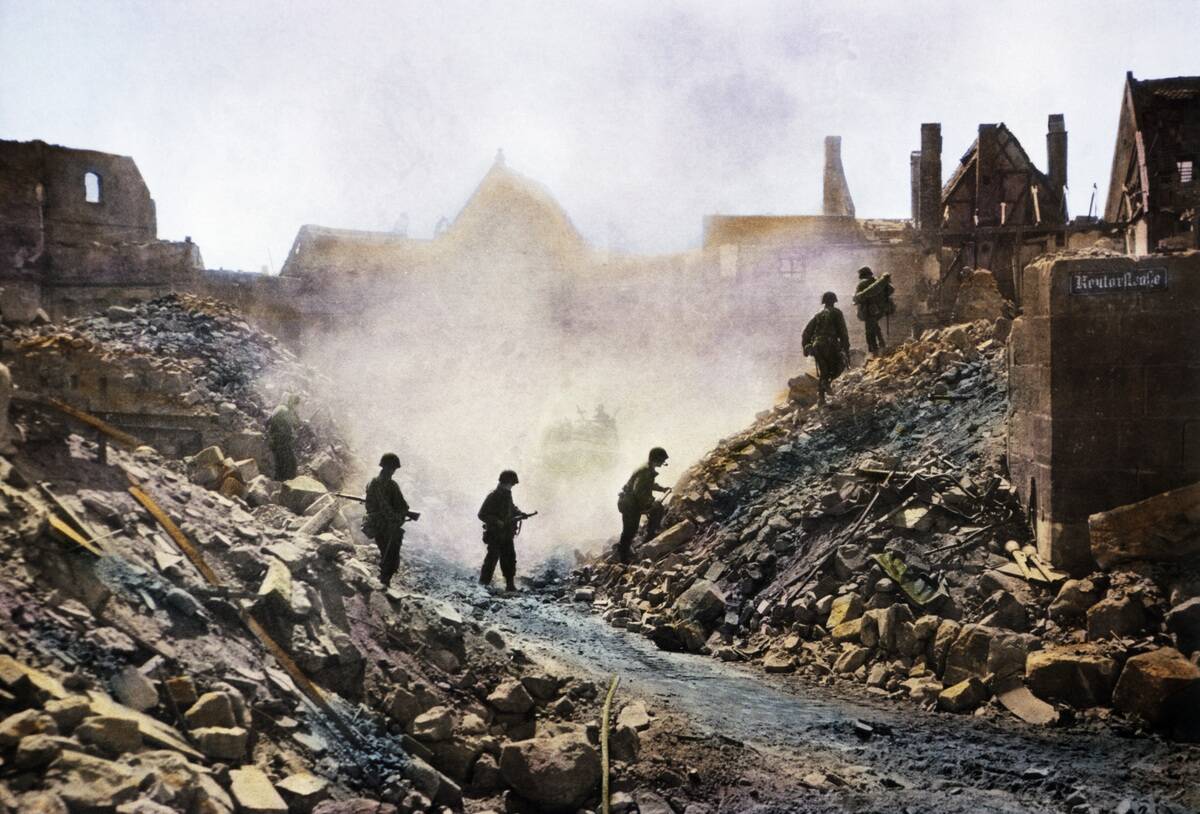
After making landfall at Normandy, Allied forces took several routes through Europe, liberating France and Belgium as they marched on Germany.
They crossed the Rhine in March of 1945, and Allied forces from the United States, Britain, and Canada fought through a series of bloody battles as they approached Berlin.
Crossing the Rhine was a major milestone.
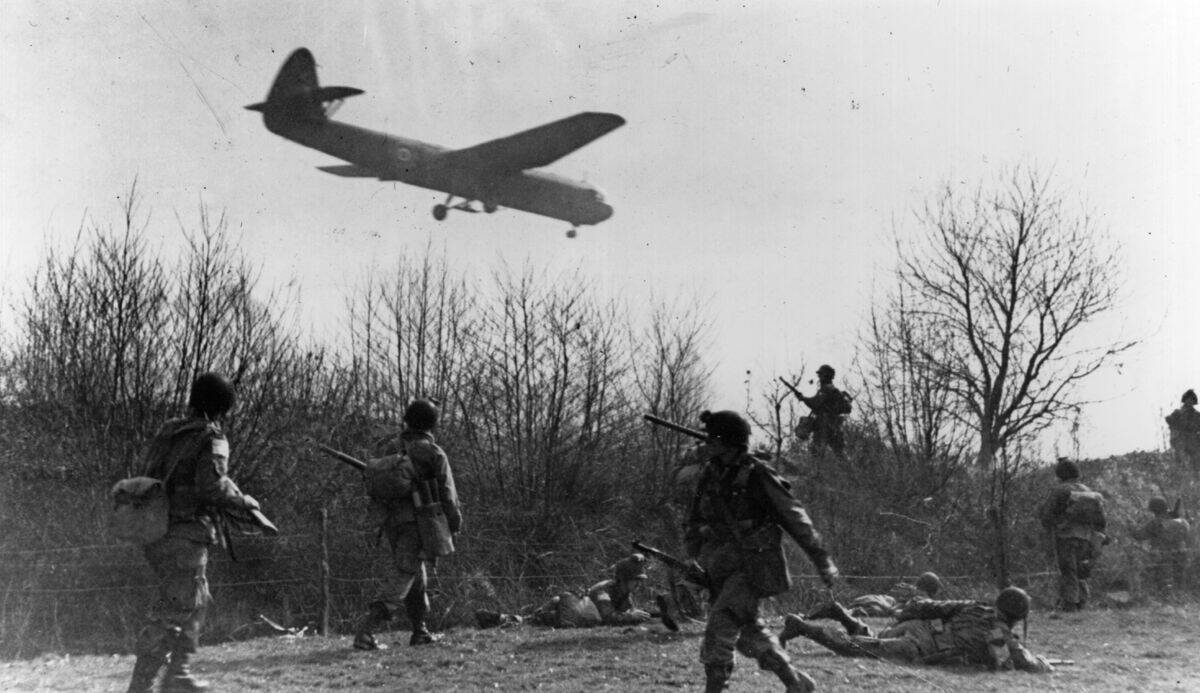
The Allied crossing of the Rhine River in March of 1945 was a pivotal milestone in the war, as it represented the crossing of Germany’s last major natural defense line.
This breakthrough cleared the way for further advances into Germany, which represented the final push towards Berlin.
Iwo Jima loomed large.

In the Pacific Theater, U.S. Marines launched an assault on the heavily fortified Japanese island of Iwo Jima.
It was a fierce battle that killed over 6,800 Marines and nearly all of Japan’s 20,000 defenders. It also served as a precursor to intense battling in Okinawa.
Much of Germany was in ruins.

By the time Soviet and Allied forces entered Berlin in April of 1945, the outcome of the war was no longer in question. Many of the city’s buildings had already been destroyed by intense aerial assaults.
The Battle of Berlin saw brutal urban warfare as Soviet troops stormed the city. With the destruction of the Reichstag building, the fall of Berlin was official.
Wounded soldiers got celebrity visits.
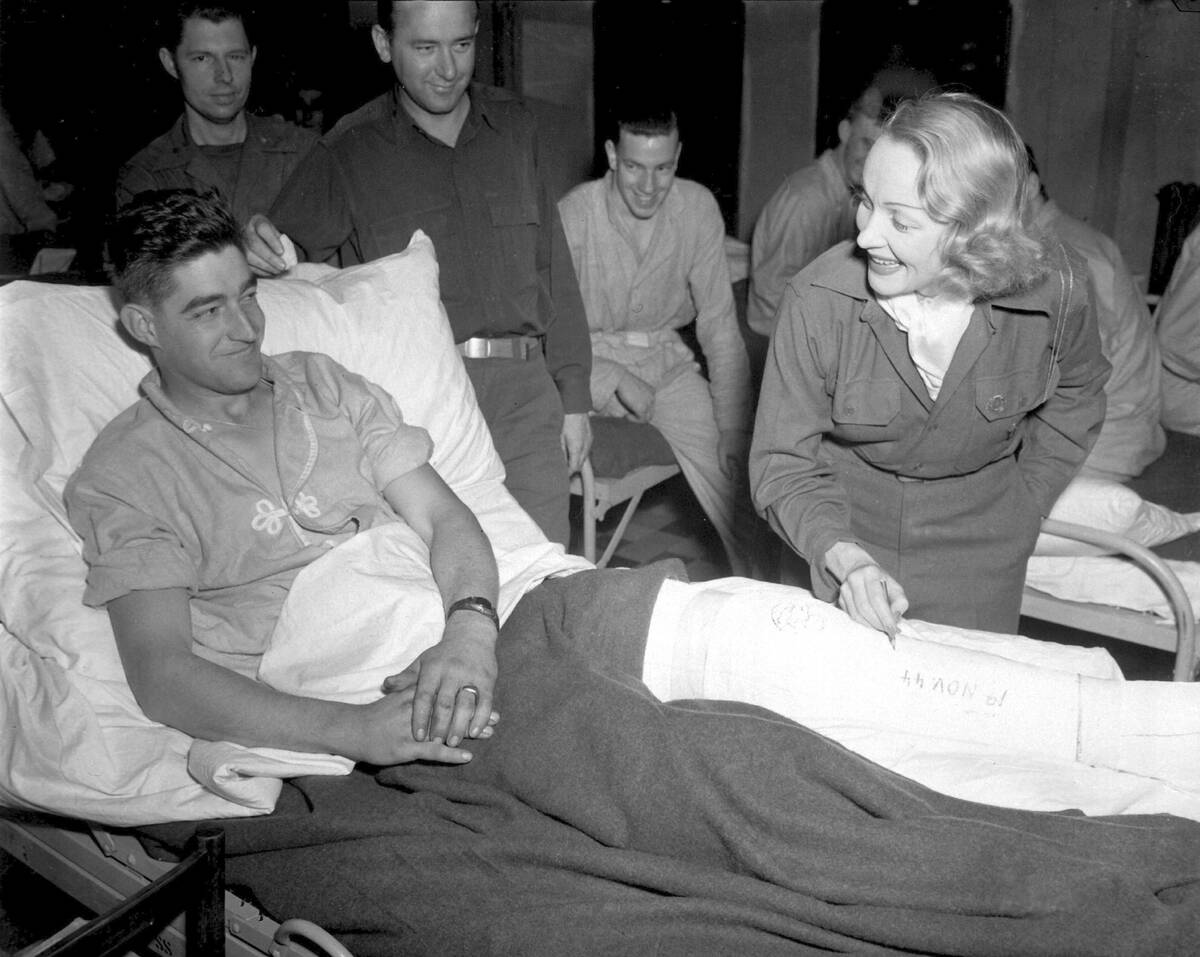
A big part of keeping morale high in the war effort involved celebrities visiting injured servicemen. This soldier is clearly bashful after meeting actress Marlene Dietrich.
Spirits were also lifted as entertainers like Bob Hope visited military hospitals and bases to perform for the troops.
Warfare like this had never been seen before.
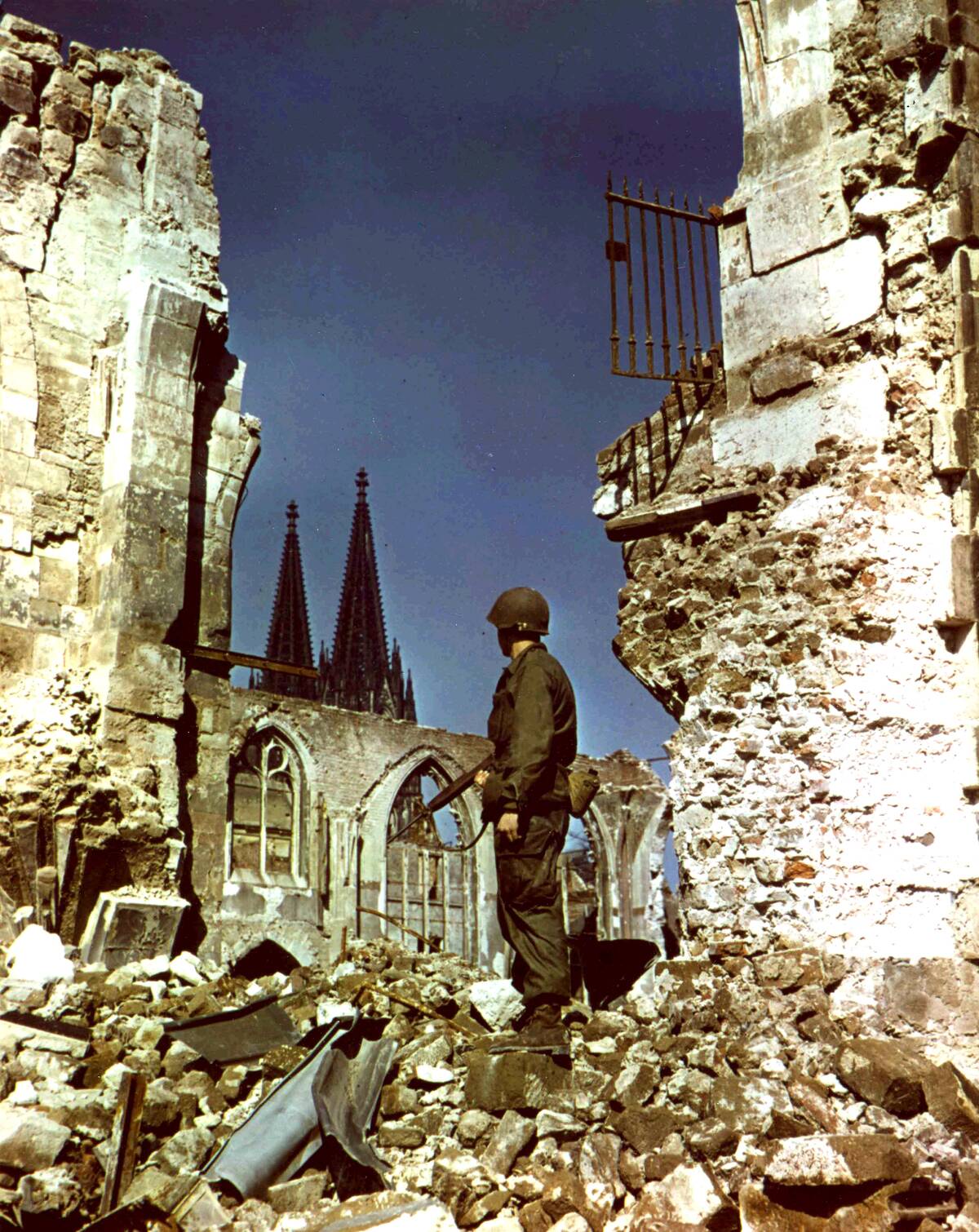
Aerial attacks were a fixture of World War I as well, but technological innovations meant that the kinds of attacks seen in World War II were the first of their kind.
This image, showing decimated buildings in Cologne, Germany, shows some of the destruction wrought by World War II — in many cases, destroying ancient sites.
There was time for (brief) romance.
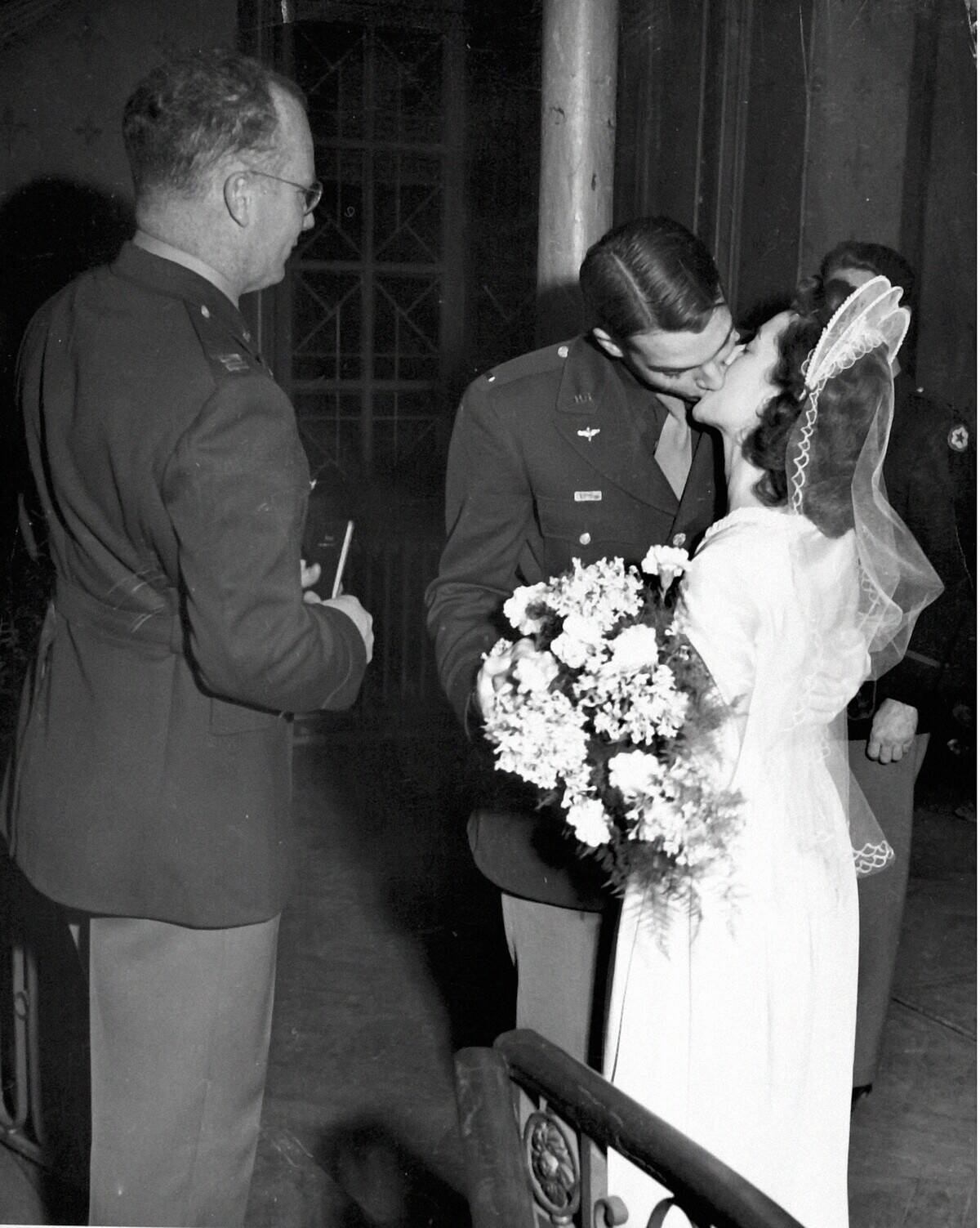
The context of war, in which people often don’t know where they’ll be in a week’s time, or even if they’ll still be alive, naturally leads to trysts and weddings.
These simple, usually hurried affairs, had the basic trappings of a wedding, and allowed couples a way to tie the knot, even if one of them would soon be deployed elsewhere.
Civilians were doing their part.
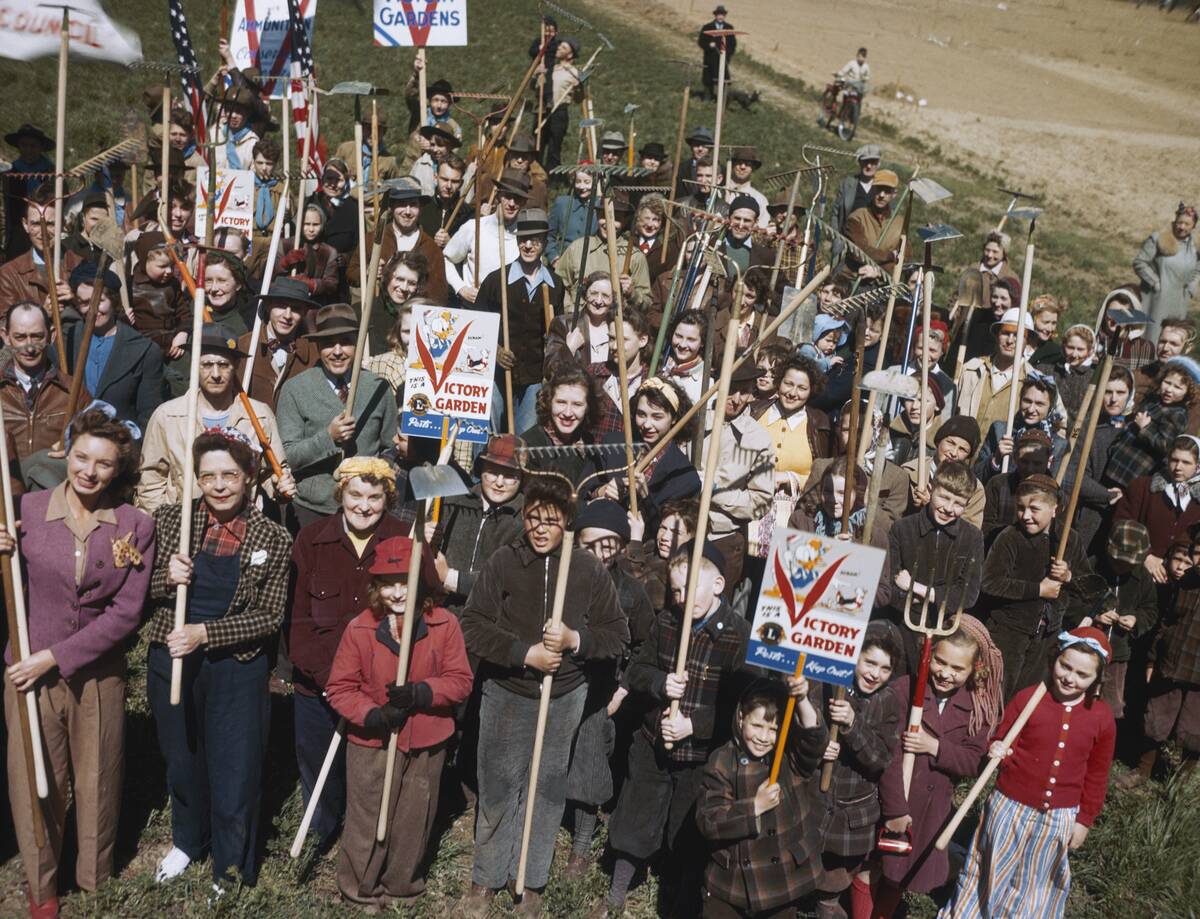
This crowd of people proudly holds their gardening implements high as they celebrate their war garden, or victory garden, in 1944.
These farming initiatives encouraged civilians to grow crops to support the war effort, which helped free up commercial crops for military use while alleviating food shortages caused by rationing.
Warfare in the Pacific was widespread.
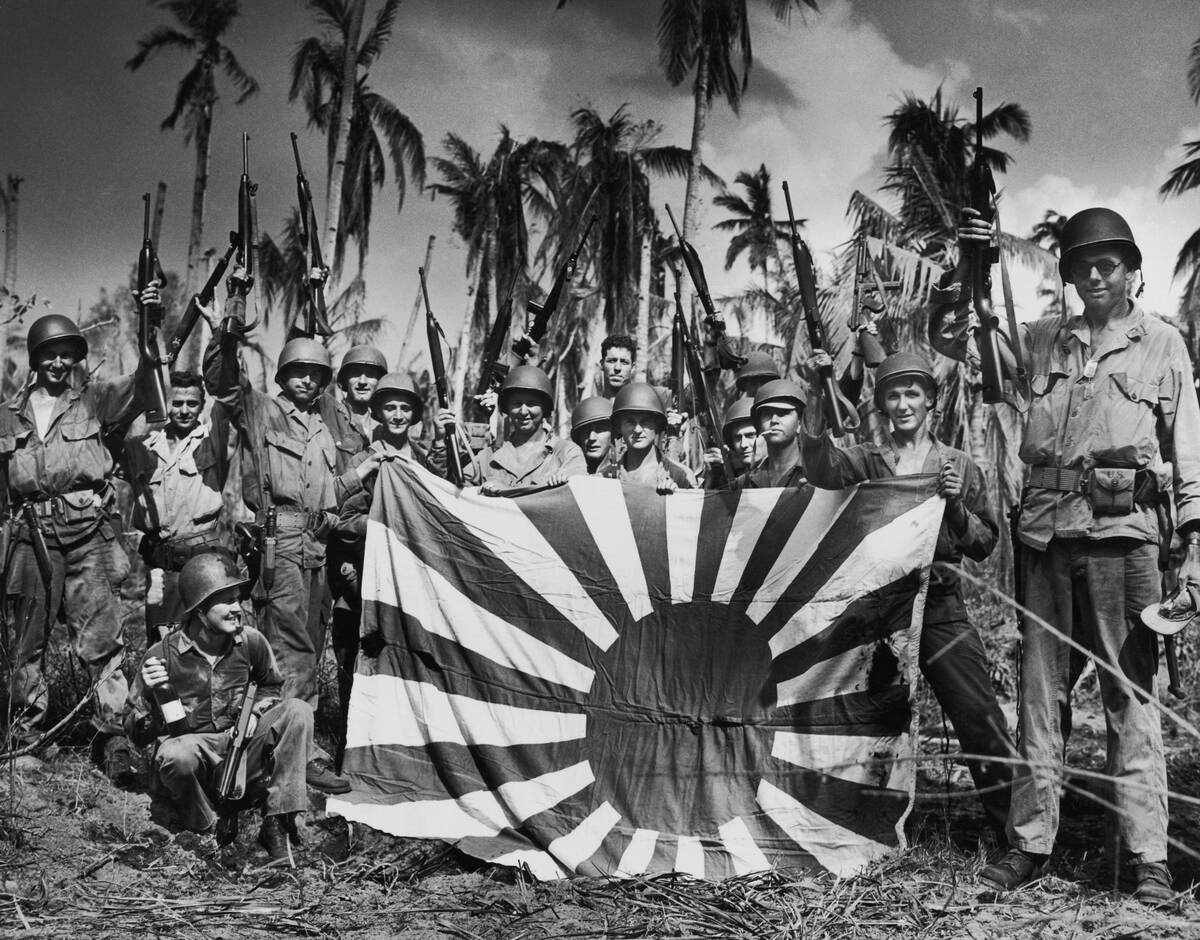
Members of the U.S. Coast Guard can be seen posing with a captured Imperial Japanese flag during the Battle of Leyte.
This battle, which took place on the Philippine island of Leyte, was pivotal in that it marked the beginning of the liberation of the Philippines from Japanese occupation.
Allied soldiers saw Nazi monuments with their own eyes.
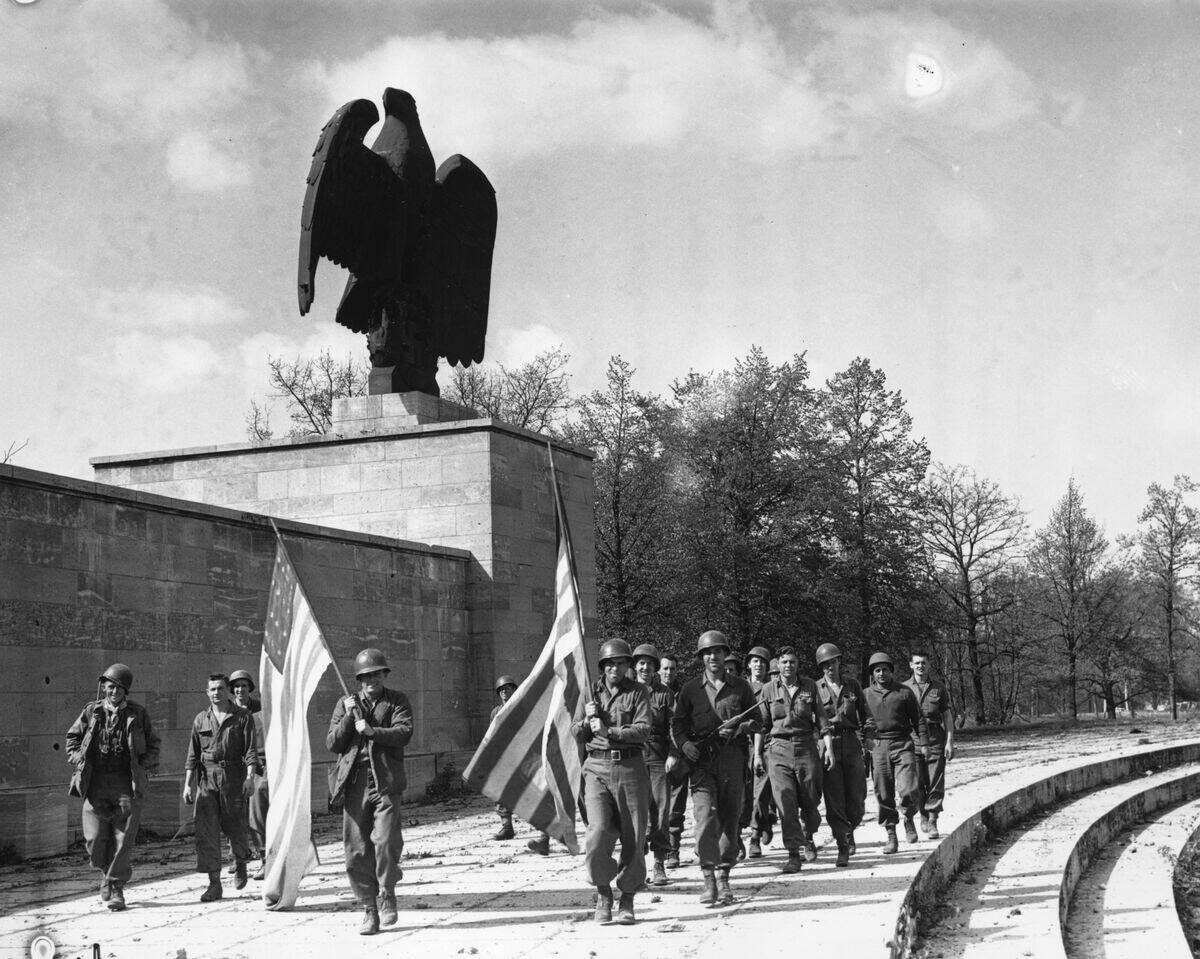
After entering Germany and taking soldiers prisoner, Allied soldiers were able to see for themselves what had been going on in Germany during the war.
This image shows the outside of Luitpold Arena in Nuremberg, which was the site of massive rallies for tens of thousands of spectators.
The Allies received royal help.

This unassuming, slightly shy-looking young woman was deployed to the Auxiliary Territorial Service where she trained as a driver and mechanic.
Of course, she was more famous for being Princess Elizabeth, the daughter of King George VI and the future queen of England.
Soldiers and civilians intermingled.

After German forces had either fled or been captured during the battles of the Western Allied invasion of Germany, civilians were the only locals who were left.
This image shows the juxtaposition of Allied troops as they march through a destroyed town en route to Berlin with civilians who are assessing everything they’ve lost.
The Battle of the Bulge was a last gasp.
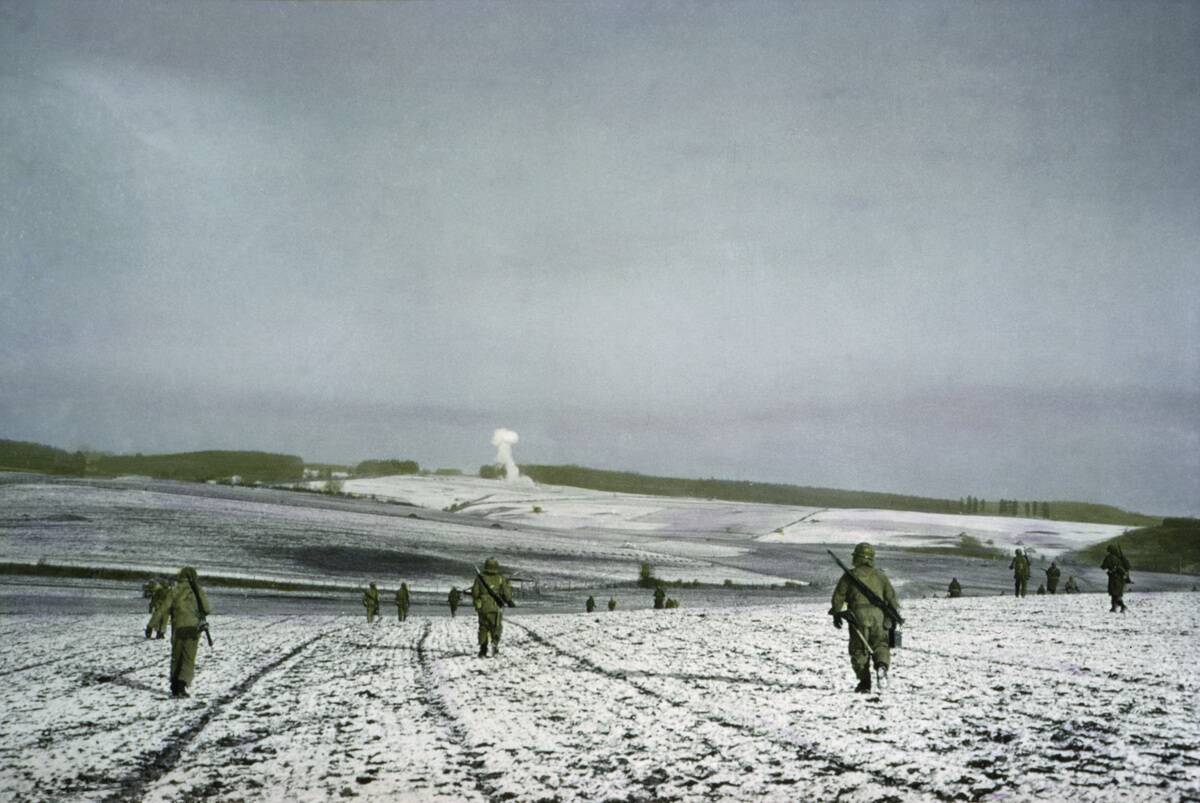
The Battle of the Bulge, which began in December of 1944 and ended the following month, represented the last major Nazi offensive against the Allies on the Western Front.
Named for the “bulge” the German offensive initially created in the Allied front lines, the battle resulted in an Allied victory and marked the beginning of the end for Nazi Germany.
It was a brutal fight.
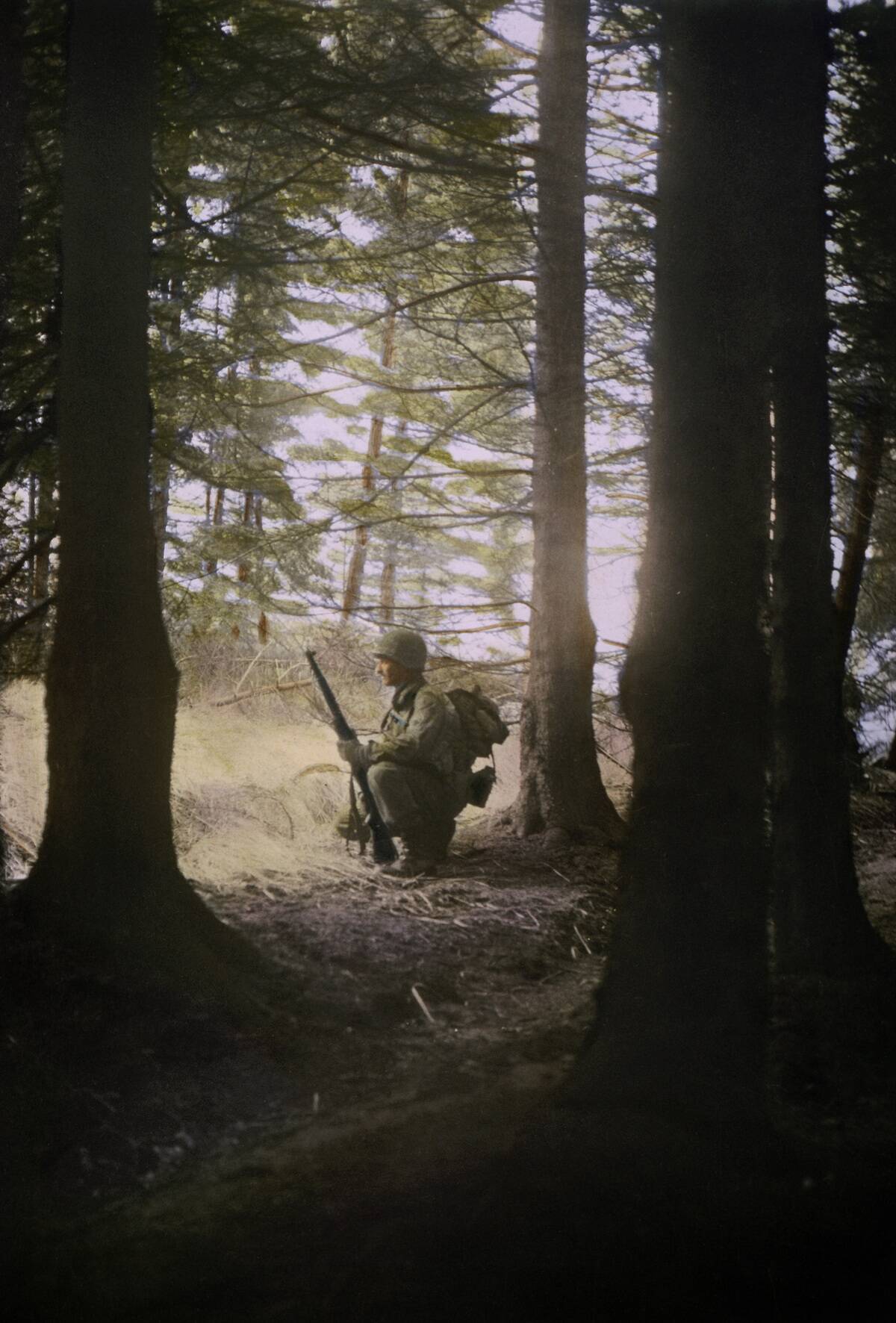
The Allies were initially caught off-guard by the German attack, and were forced to regroup and mount a counteroffensive while dealing with harsh winter weather.
Both sides suffered heavy casualties, and when the smoke had cleared, the Allies resumed their push into Germany.
This general was a key figure.
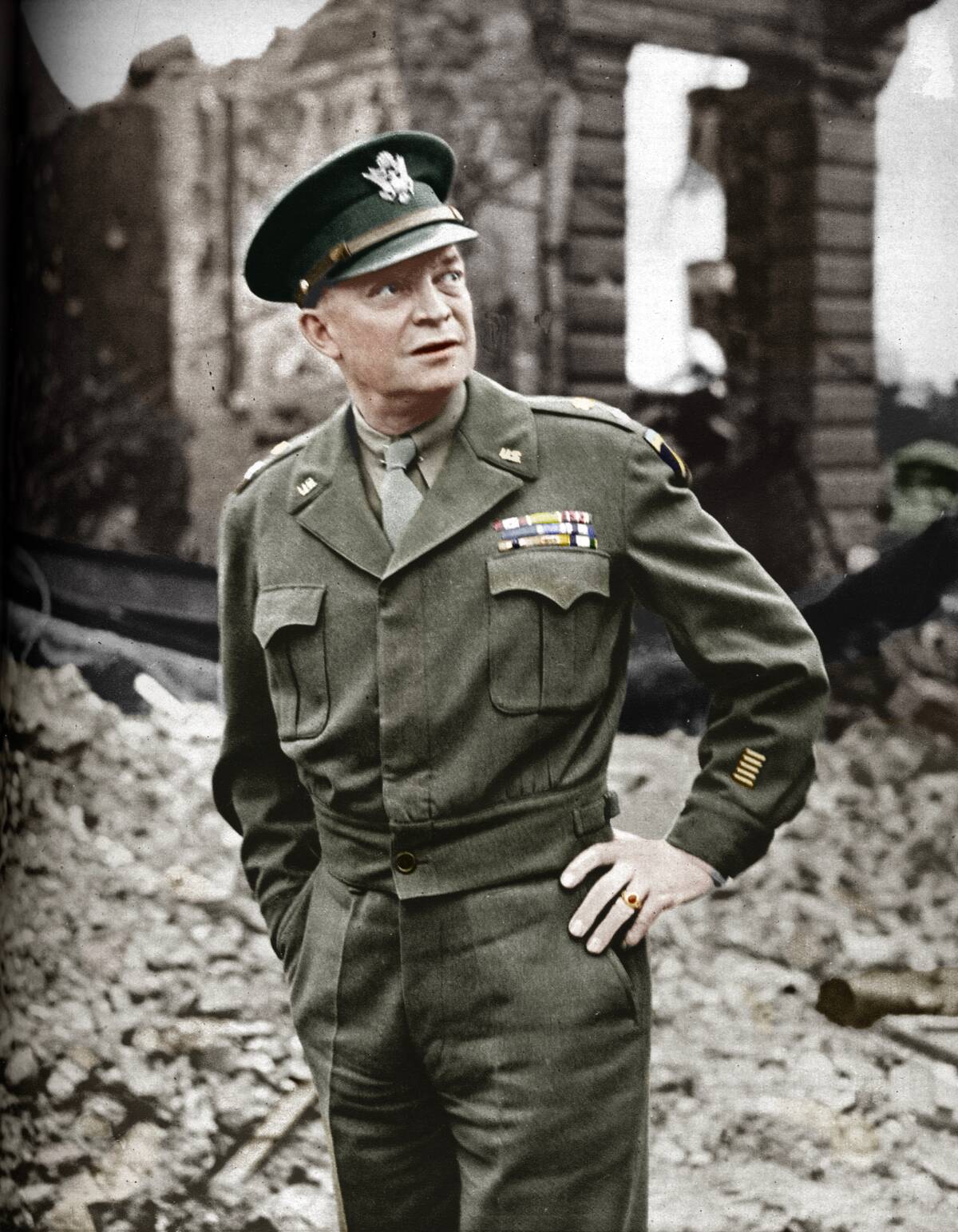
The decisive leadership shown by American General Dwight D. Eisenhower during World War II helped make him famous and eventually propel him into the White House.
Eisenhower famously worked with Winston Churchill to plan and execute the D-Day invasion, while his calm and diplomatic approach earned him immense respect.
Many soldiers were maimed.
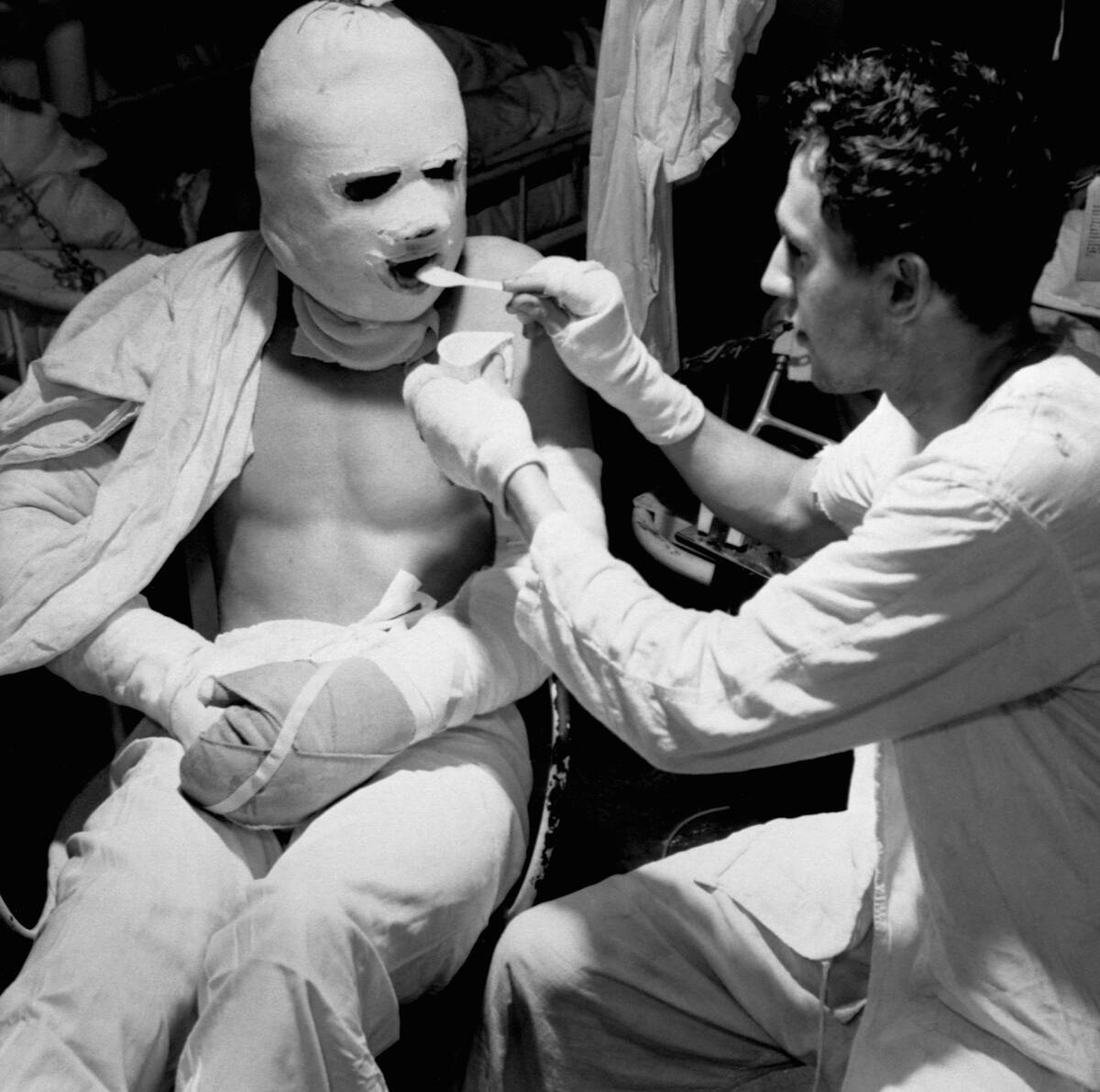
There were innumerable ways to get hurt, wounded, and killed during World War II, and any soldier who survived likely considered themselves likely.
Still, images like this one — showing a U.S. serviceman who was badly burned in a kamikaze attack — underline just how horrific the effects of war could be.
The Germans stole a lot of art.
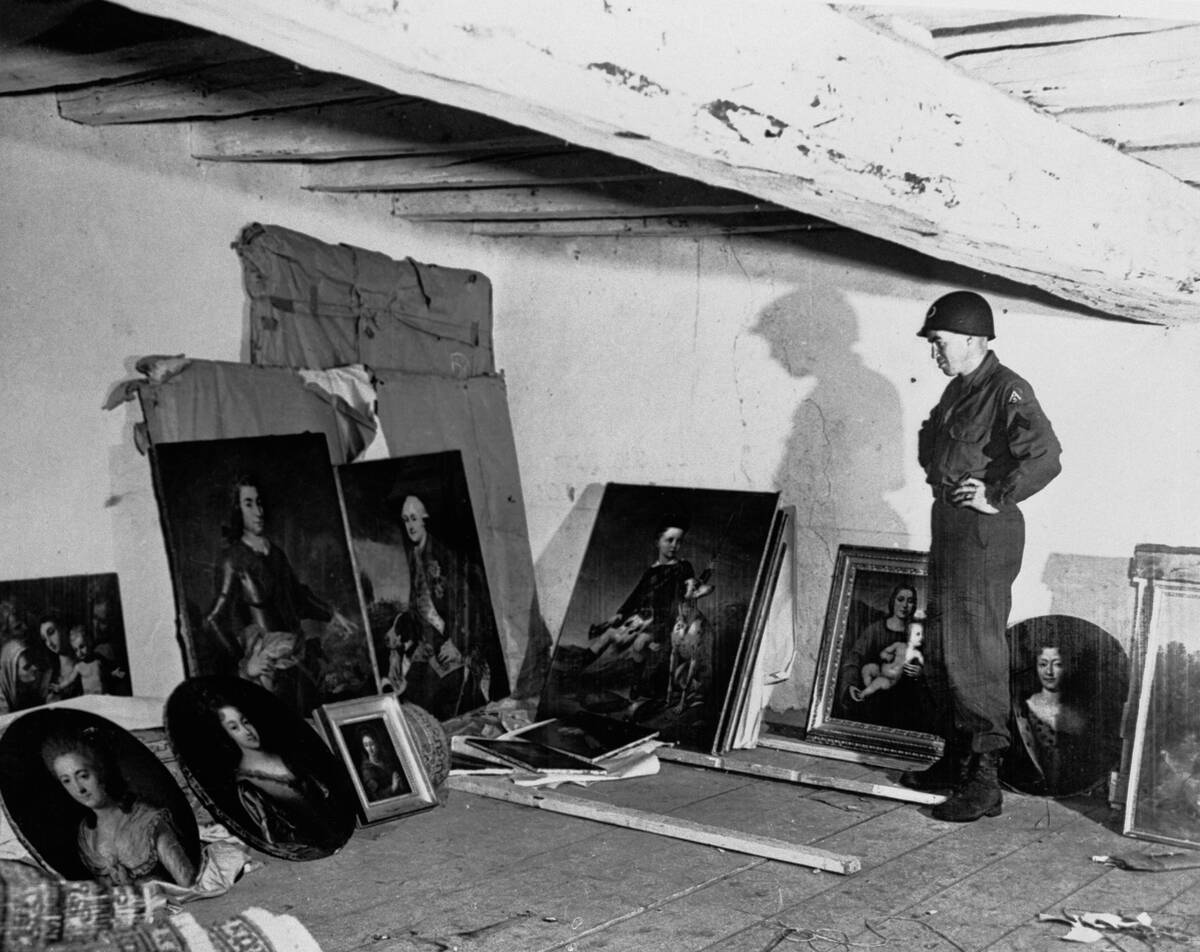
During World War II, the Nazis systematically looted art from occupied countries across Europe, in turn amassing one of the largest art collections in history.
While much of the art was destroyed or otherwise lost to history, Allied forces were able to recover several treasure troves of these looted works.
Families were reunited.
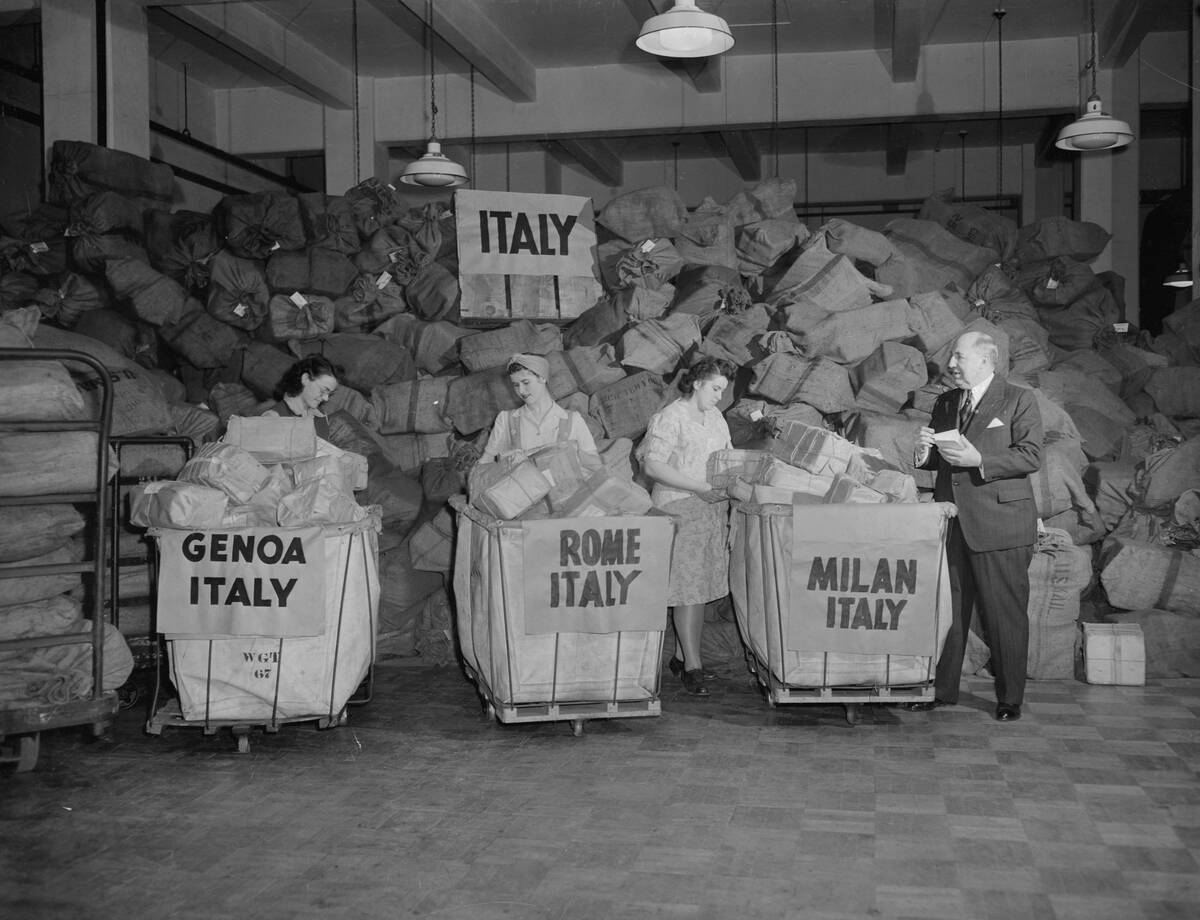
During the war years, occupied countries largely went dark as there were few mechanisms to enable citizens to communicate with loved ones from the wider world.
Following the liberation of these countries, mail flowed once more. This image shows packages bound from New York to Italy, which had gone up by more than 400 percent over the previous year.
Germany was in ruin.
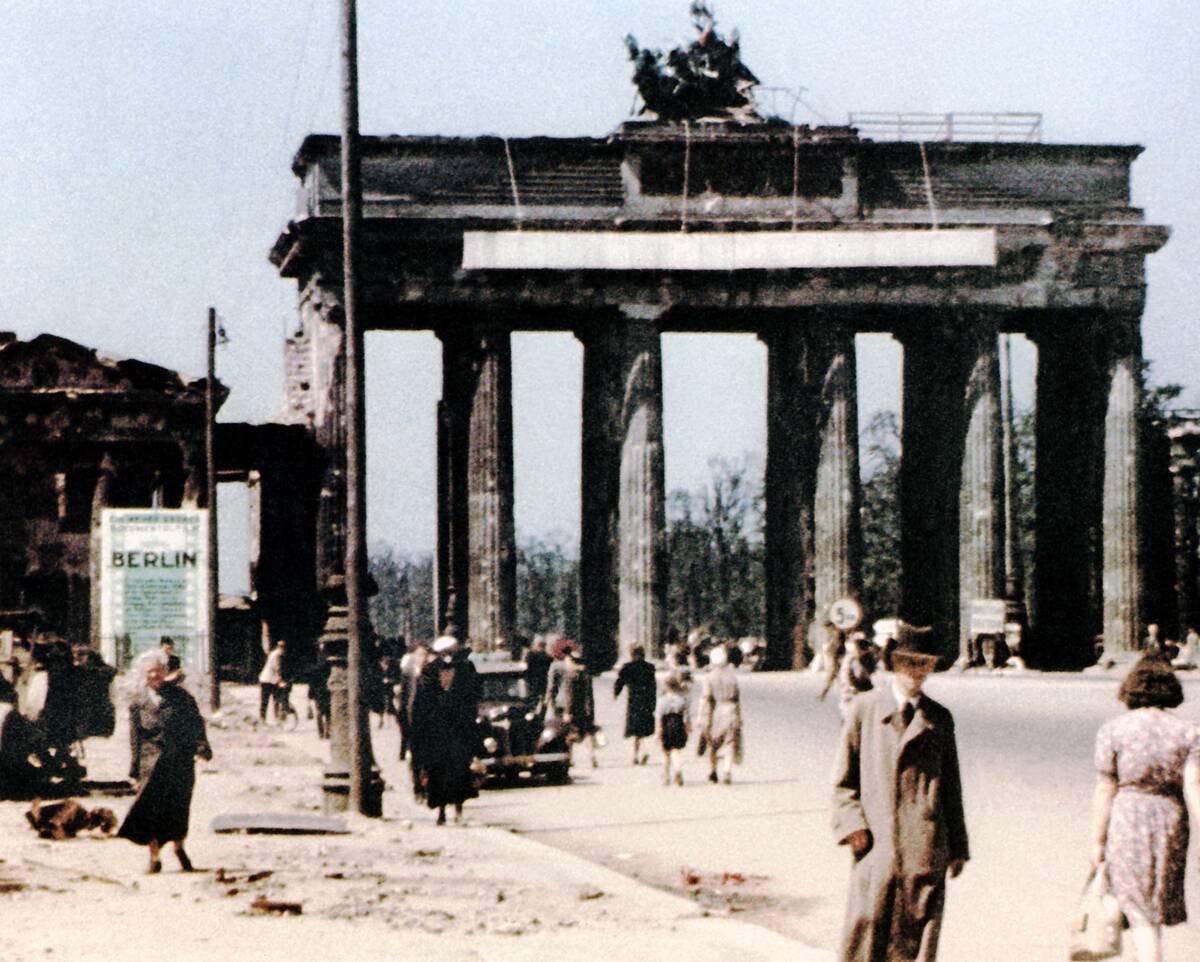
Berlin’s Brandenburg Gate was severely damaged, but not destroyed, during the chaos of World War II. This image from the summer of 1945 shows ordinary Germans strolling past the gate after the fighting has ended.
The famous gate became a symbol of division in the decades to follow, as the Berlin Wall would be built nearby.
France returned to normal.
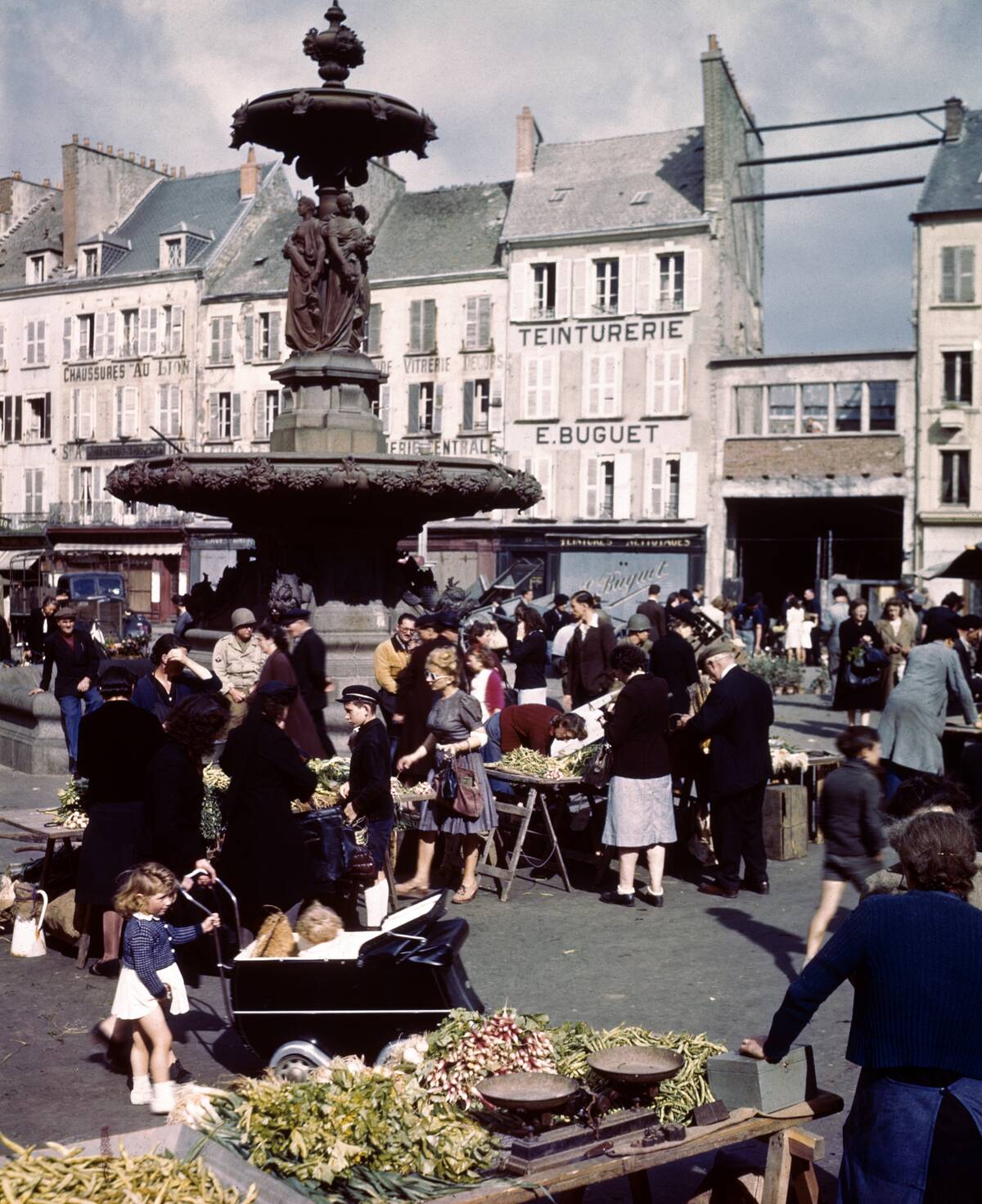
France was liberated in the aftermath of the D-Day landings in 1944, and by the end of August, Paris had been liberated.
This was thanks to the efforts of not just Allied forces, but also the French resistance, which provided key intelligence. This image shows a French port city as life slowly returns back to normal.
It was a proud time in Norway.
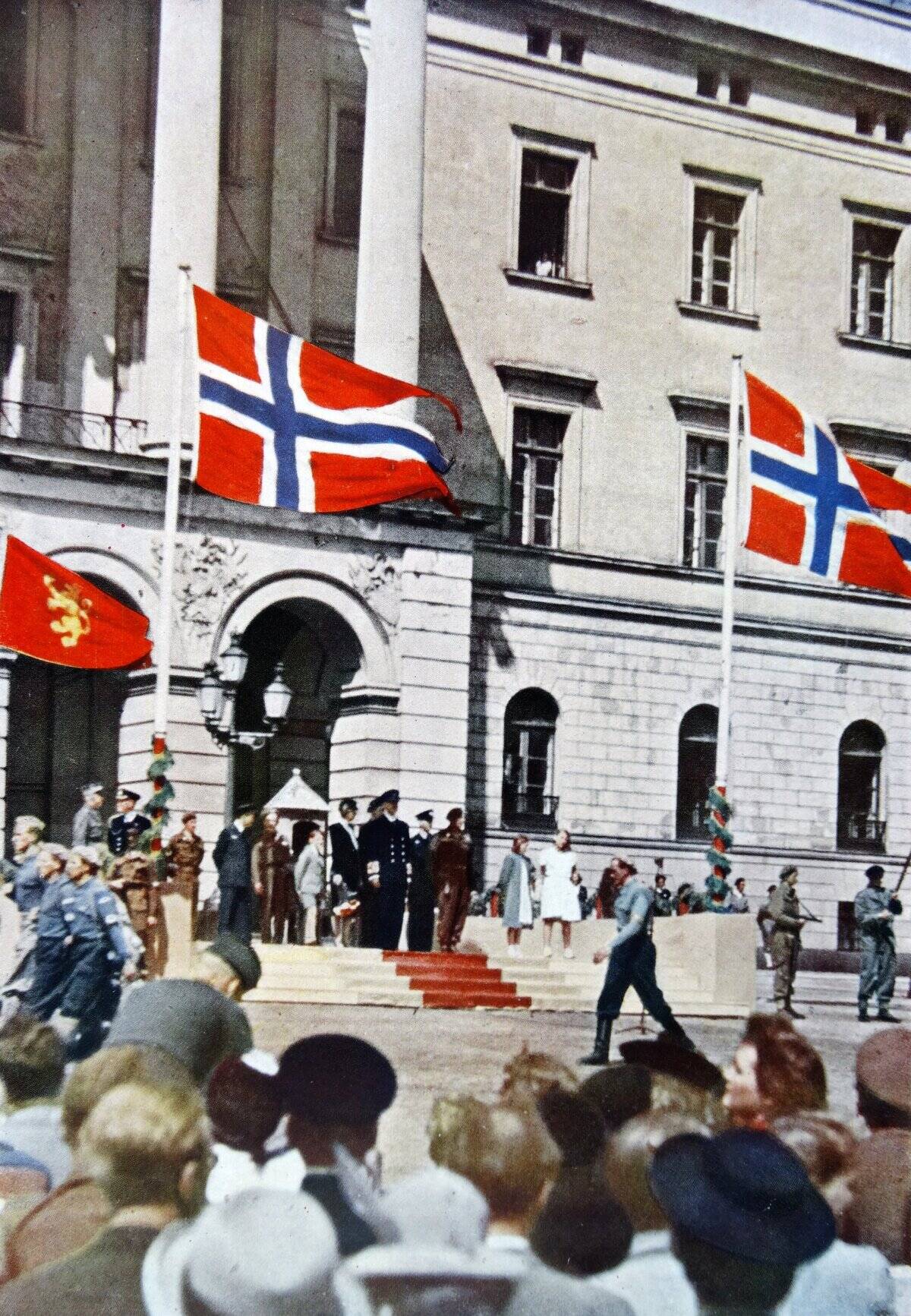
Norway had been invaded and subsequently occupied by Germany beginning in 1940, which led to harsh conditions for the Norwegian people.
Allied and Soviet troops were able to push out German forces by the spring of 1945, which liberated Norway after years of occupation.
The royal family got involved.
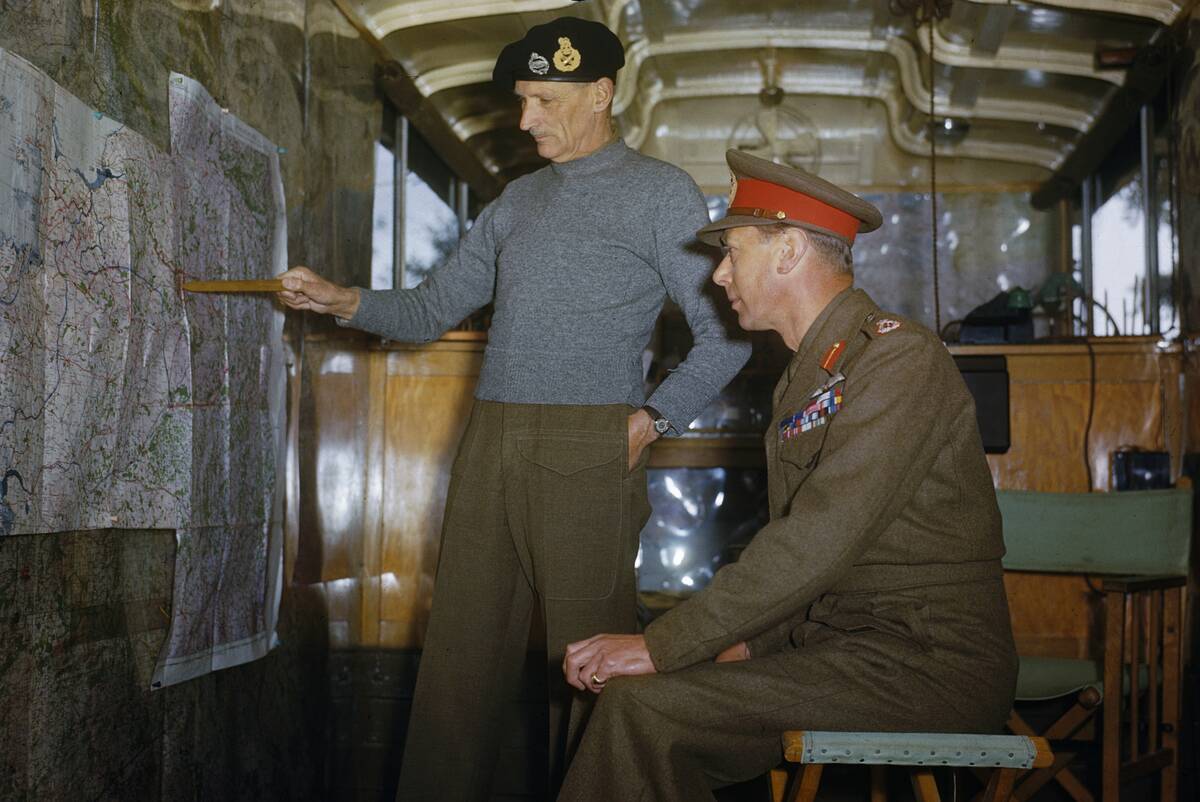
While members of the royal family served in non-combat, largely ceremonial roles during the war, their presence helped to inspire others to take up the cause.
This image shows King George VI as he tours the headquarters of the British Liberation Army in Holland in October of 1944.
The Germans surrendered on May 7, 1945.
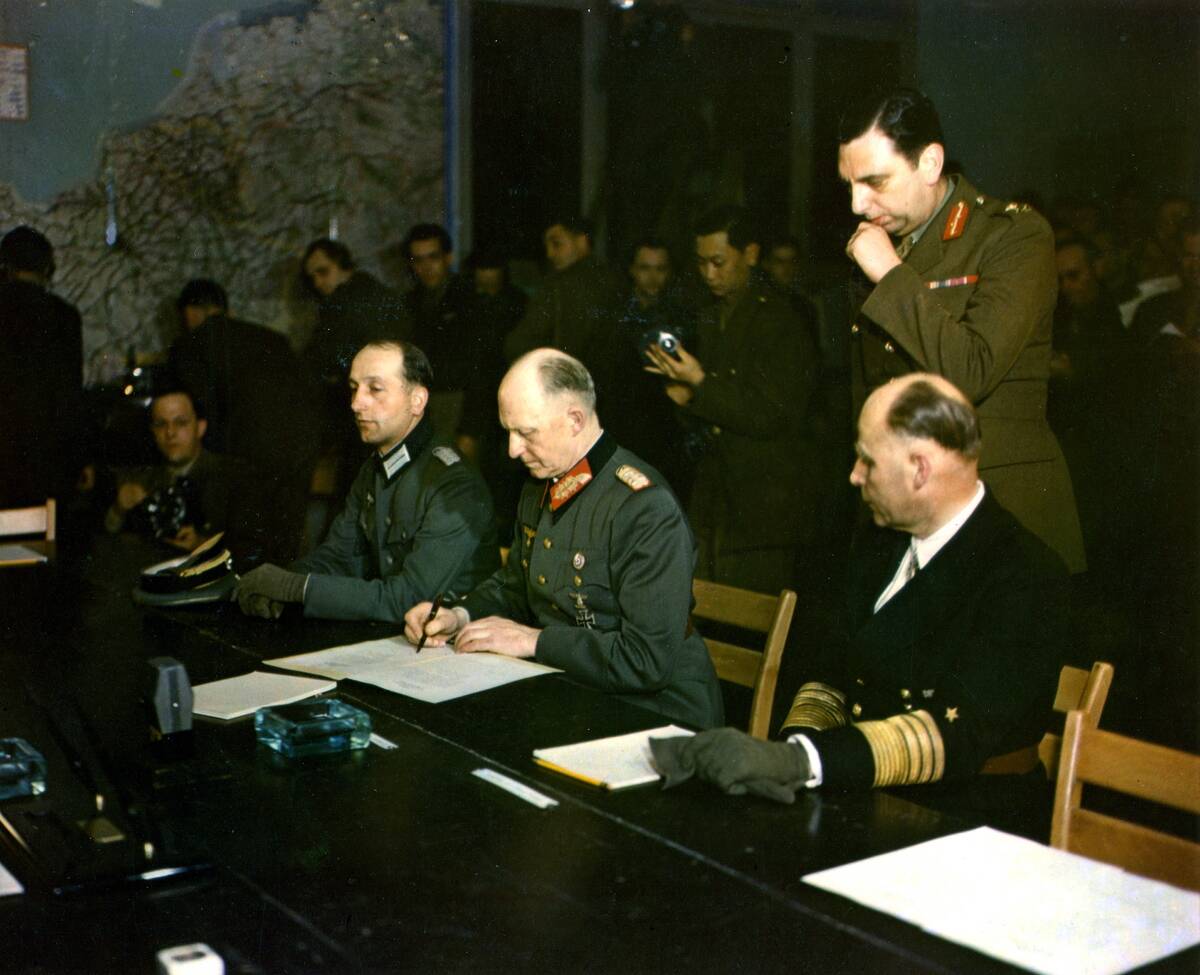
In Reims, France, German Colonel General Alfred Jodl signed the German Instrument of Surrender at the headquarters of the Allied Supreme Command.
This surrendered was accepted by General Eisenhower and represented the end of Nazi hostility in the war.
It was celebrated as V-E Day.
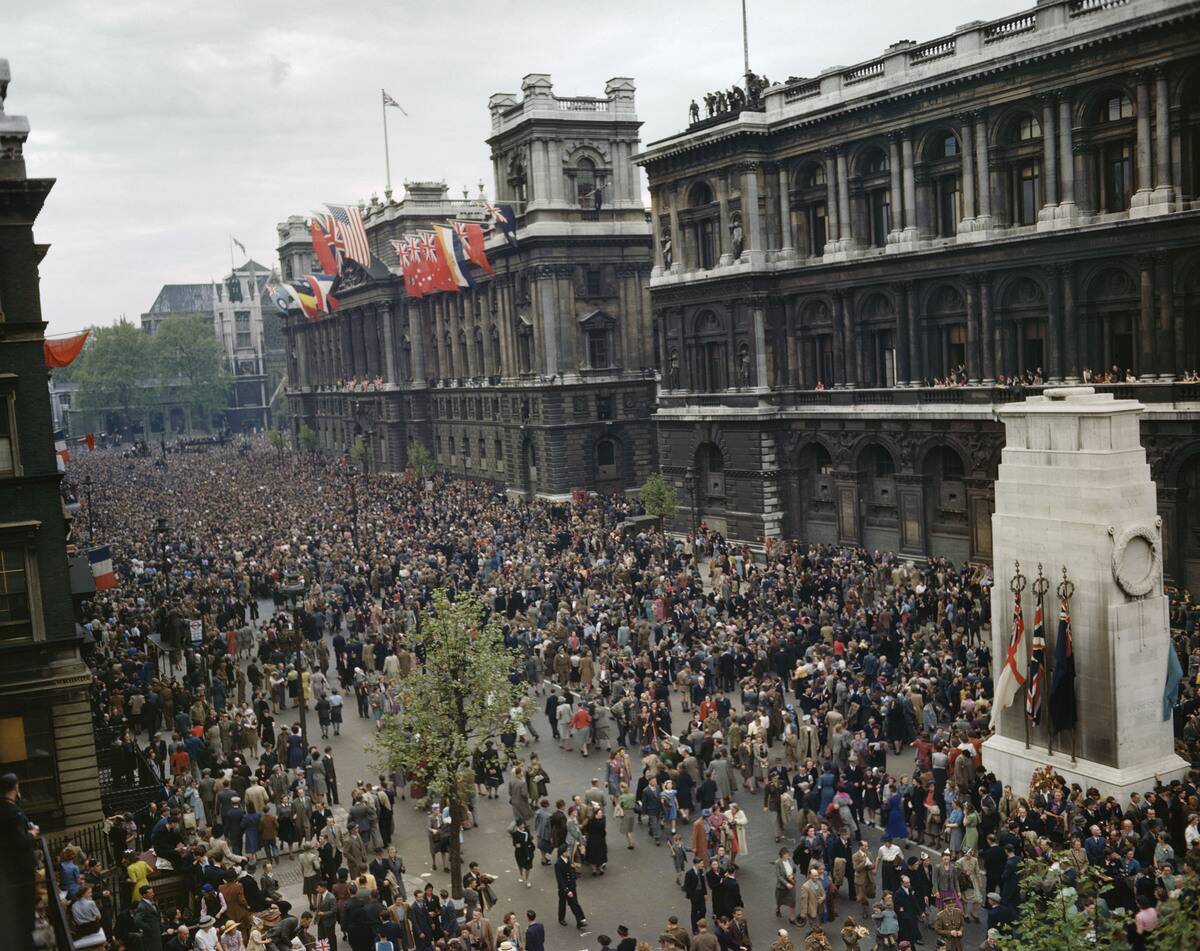
This photo, taken the following day, captures the jubilant mood in Britain on V-E (Victory in Europe) Day.
It was a massive celebration across Allied nations, but particularly in Britain — a country whose citizens had dealt with the near-constant threat of German invasion.
It was big news stateside as well.
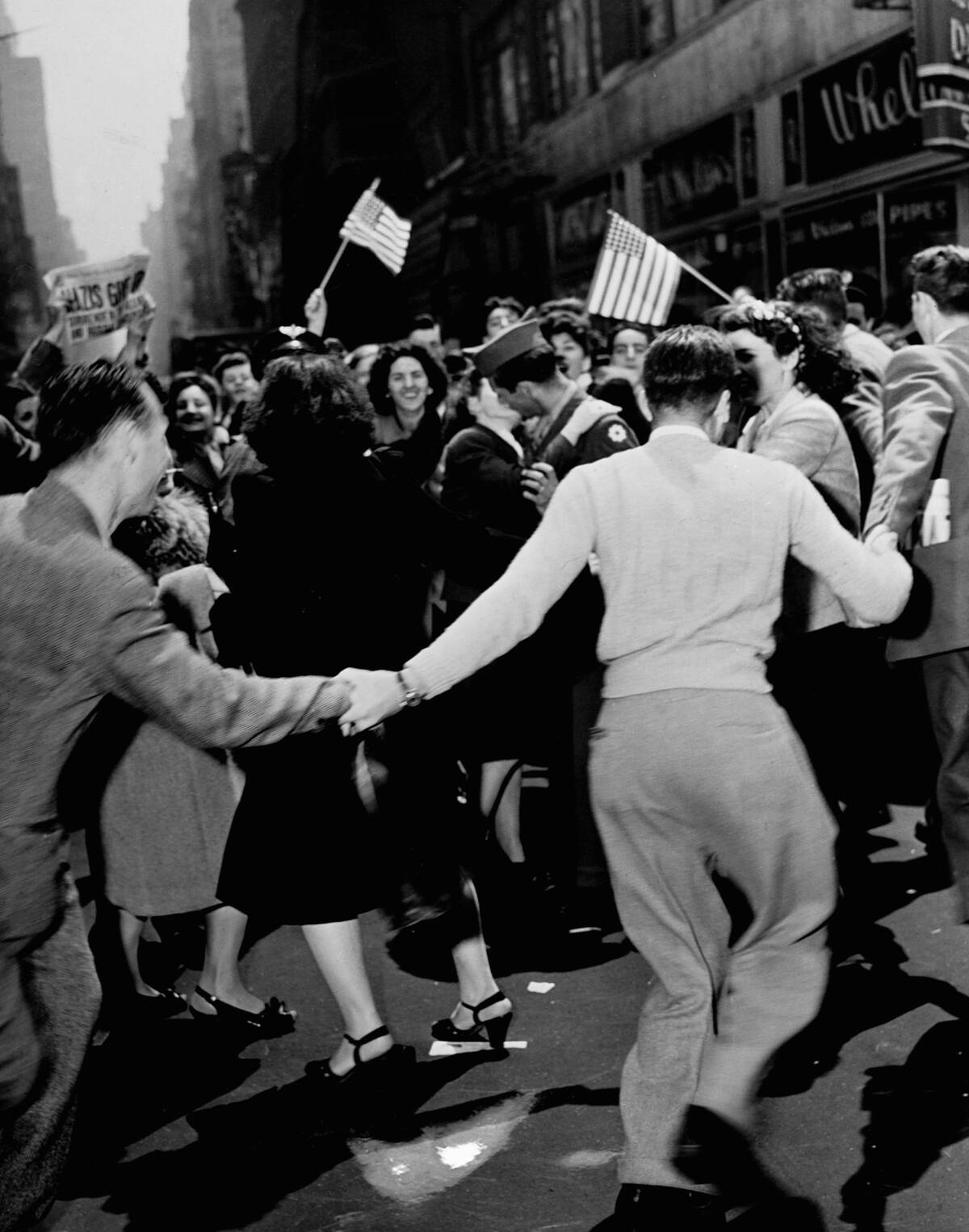
Americans were also happy following the news that Germany had surrendered, as it marked the collapse of Nazi Germany.
That said, the war in the Pacific was still ongoing — but victory was in the air, and Japanese surrender was just around the corner.
Japan surrendered later in 1945.
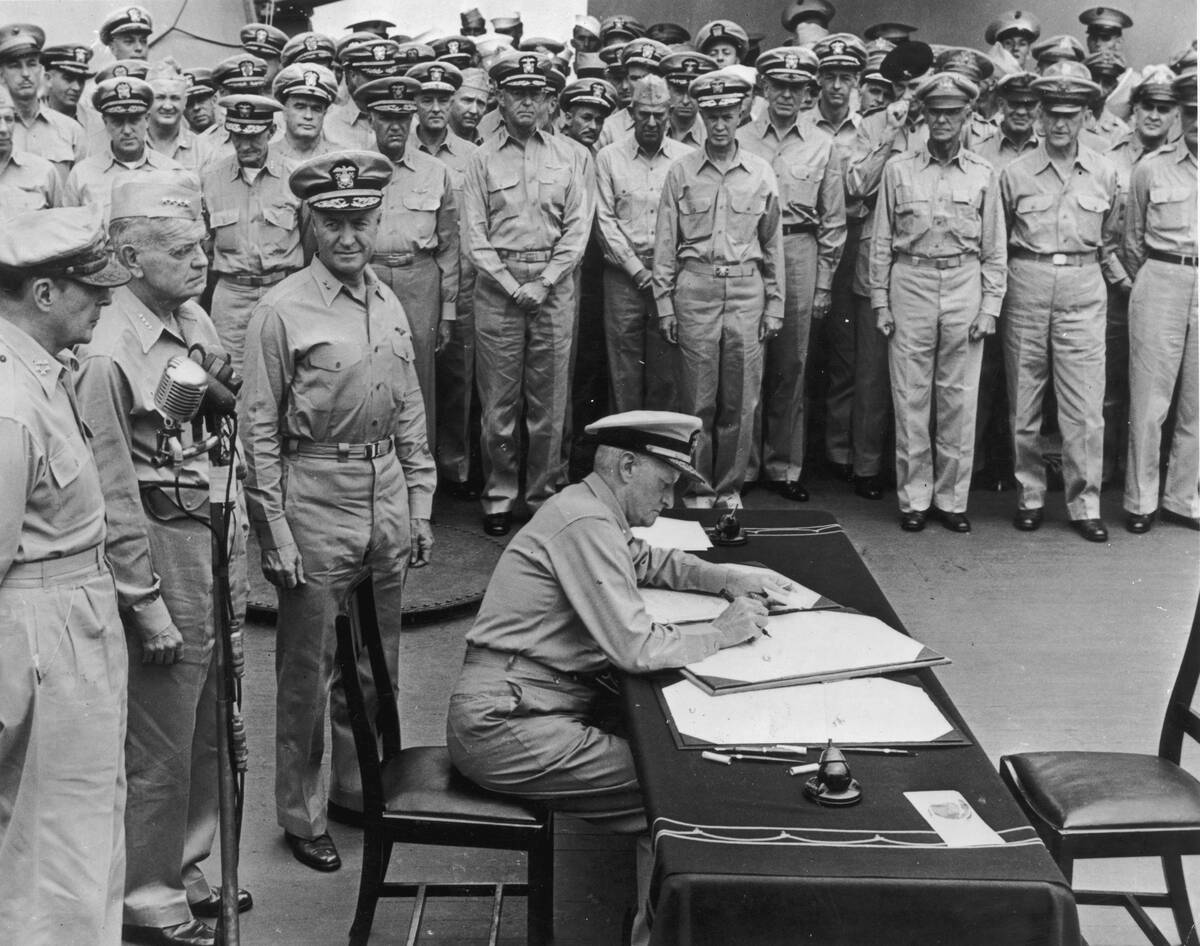
The atomic assaults on Hiroshima and Nagasaki, combined with the Soviet Union’s declaration of war on Japan, signalled the end of Imperial Japan’s ambitions in World War II.
The surrender ceremony took place on September 2nd, and after the documents were signed, the deadliest conflict in human history was effectively over.
V-J Day was a joyous time.
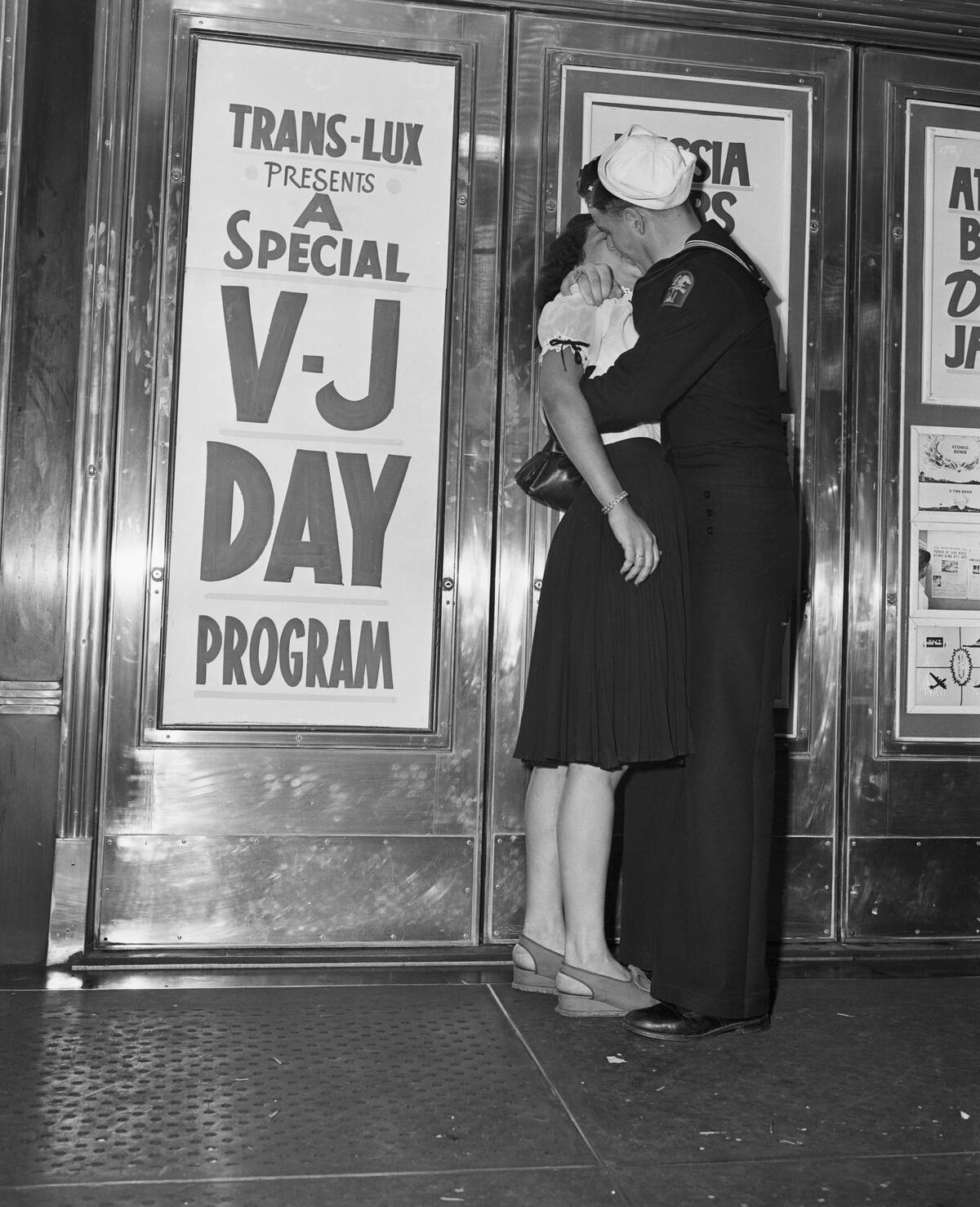
V-J , or Victory over Japan, Day refers to the day that Japan officially surrendered, marking the end of World War II.
Emperor Hirohito famously announced on August 15, 1945 that his country would surrender. Then, a couple of weeks later on September 2, Japanese officials officially signed surrender documents aboard the USS Missouri in Tokyo Bay.
War criminals were tried at Nuremberg.
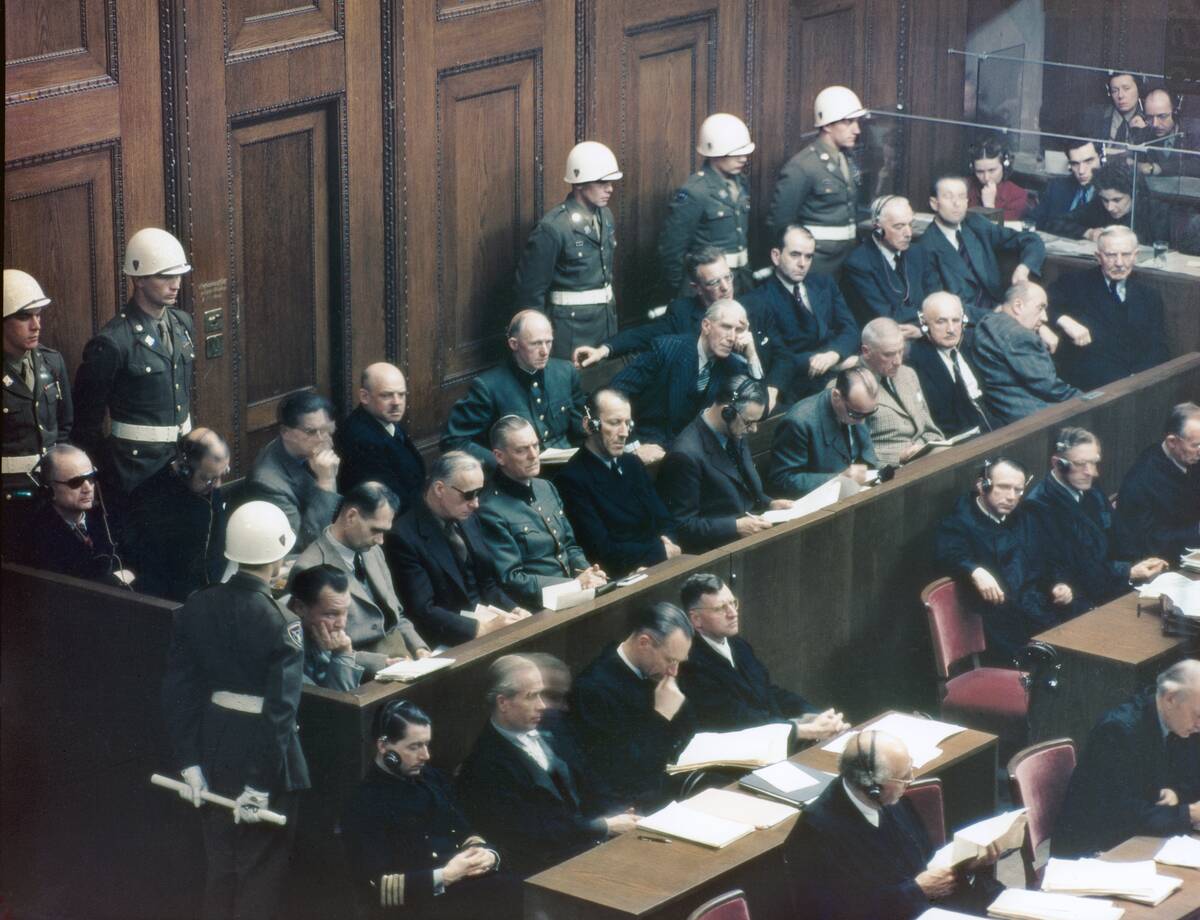
The Nuremberg Trials, a series of military tribunals, were held to prosecute prominent leaders of Nazi Germany for war crimes, crimes against humanity, and crimes against peace.
The Trials not only led to punishment for key Nazi officials, but helped to establish the precedent that individuals could be held accountable for war crimes.
